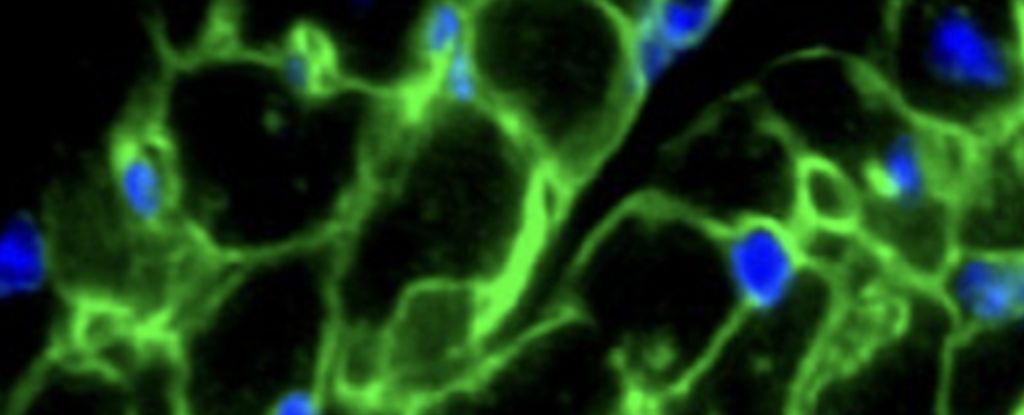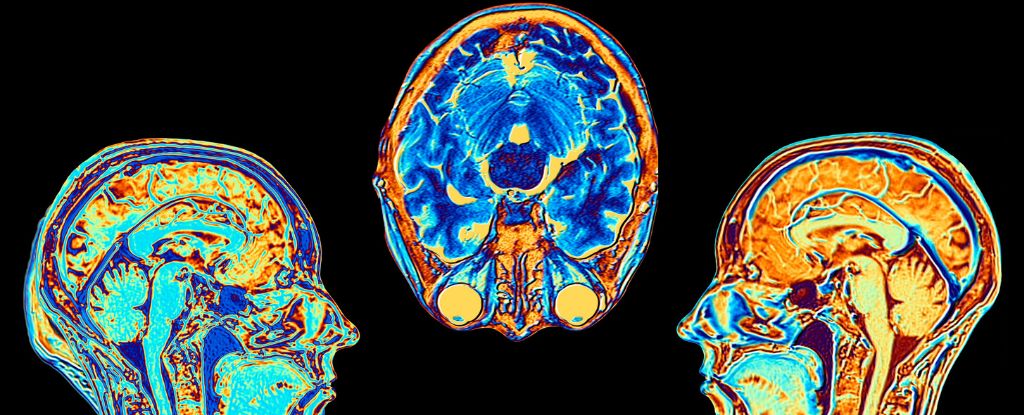ARTICLE AD
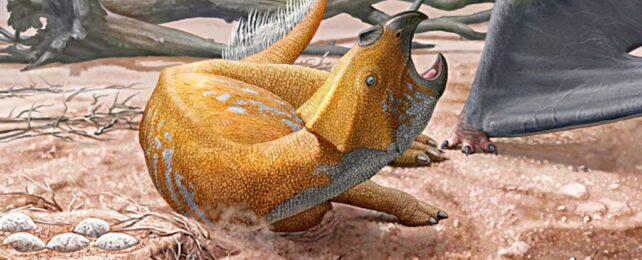 A small triceratops relative defending its eggs. (Sergey Krasovskiy/Stocktrek Images/Getty Images)
A small triceratops relative defending its eggs. (Sergey Krasovskiy/Stocktrek Images/Getty Images)
A delicate, three-year analysis confirms the 'Ganzhou Mini Egg' is the tiniest dinosaur egg ever known.
At just 30 millimeters in length (about 1.18 inches), this is much smaller than the previous record holder, the 45.5-millimeter-long Jinguo Micro Ellipsoid Egg.
This adorable discovery lay within a clutch of six almost completely intact eggs found in 2021 at a construction site near Ganzhou City in China.
Researchers used electron microscopy and electron backscatter diffraction to gently peer at the approximately 80 million-year-old eggs' contents without harming them.
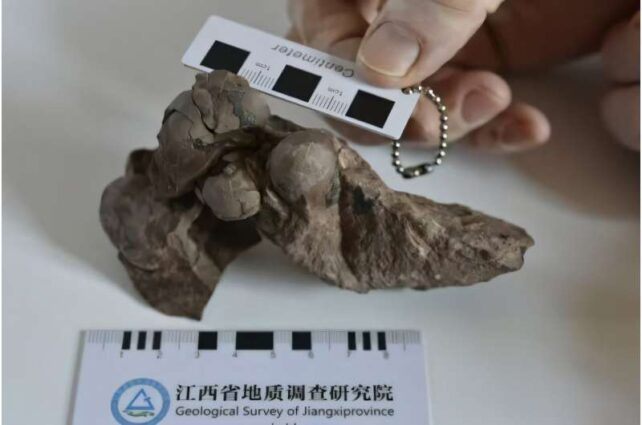 Dinosaur egg fossils discovered in the city of Ganzhou, east China's Jiangxi Province. (China University of Geosciences)
Dinosaur egg fossils discovered in the city of Ganzhou, east China's Jiangxi Province. (China University of Geosciences)Within them, geoscientist Rui Wu from the China University of Geosciences and colleagues found enough tiny clues to confirm what they were looking at was not a direct bird relative but a non-avian theropod dinosaur instead.
This included details of the eggs' microstructures as well as what are likely limb bones within, allowing Wu and team to place the newly identified species, Minioolithus ganzhouensis, in its family tree.
"Minioolithus ganzhouensis is the smallest known dinosaur egg clutch till now and is significant for understanding the diversity of theropods in the Late Cretaceous," the researchers write in their paper.
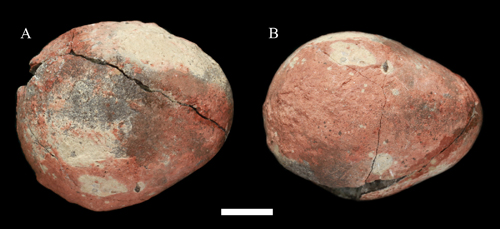 The previous smallest dinosaur eggs of Parvoblongoolithus jinguoensis, found in 2014. (ZHANG Shukang)
The previous smallest dinosaur eggs of Parvoblongoolithus jinguoensis, found in 2014. (ZHANG Shukang)While the eggs are shaped like familiar bird eggs, all known bird eggs from the Cretaceous through to today have three shell layers. The Ganzhou mini eggshell has two layers, like other non-avian dinosaurs.
The shell's thinness, type of pore system, and subtle worm-segment-like pattern on the eggs suggest M. ganzhouensis is related to the Ovaloolithus group.
However, the shell's abundance of tiny fluid sacs makes the Ganzhou Mini Eggs distinct from other known ovaloolithus eggs, revealing the newly analyzed clutch belongs to another species within the group.
Ovaloolithus eggs are tentatively thought to belong to herbivorous triceratops ancestors based on the limb anatomy of other finds. These protoceratopsids had the characteristic head frill of triceratops, but were relatively small dinosaurs, only 1-2.5 meters long from snout to tail.
Their remains have only been found in Asia.
Wu and team hope a new analysis of the discovery site will provide more clues on what laid these eggs and how these dinosaurs built their nests.
This research was published in Historical Biology.

 3 weeks ago
46
3 weeks ago
46 